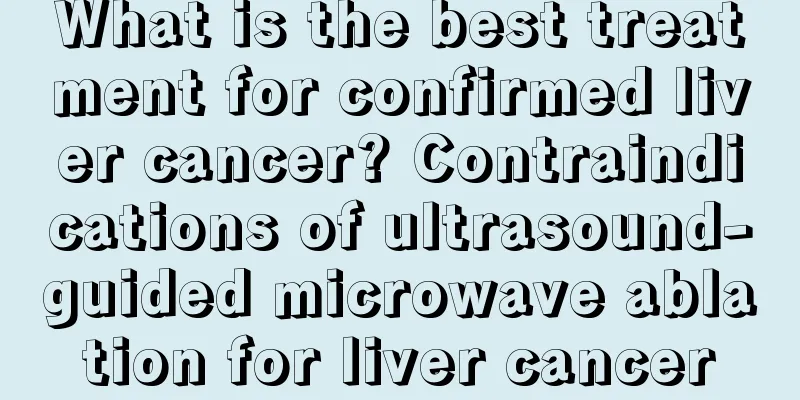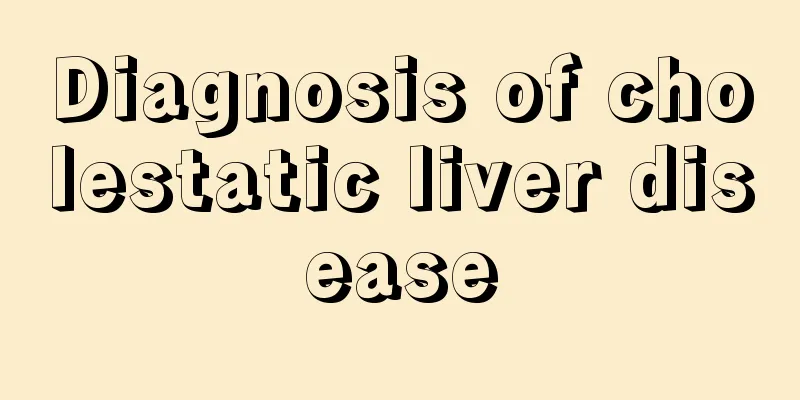What is the best treatment for confirmed liver cancer? Contraindications of ultrasound-guided microwave ablation for liver cancer

|
In addition to traditional surgical resection and hepatic artery interventional embolization treatments for liver cancer, new methods invented in recent years include minimally invasive treatments represented by microwave, radio frequency, and argon-helium knife, drug targeted therapy represented by sorafenib, as well as biological immunotherapy and liver transplantation. Among them, the most effective, safest, with the least side effects, the most economical, the simplest to operate and the shortest operation time is the cold circulation microwave ablation treatment technology. Ultrasound-guided percutaneous microwave ablation has great advantages in the treatment of space-occupying organs in the liver or other organs because of its real-time guidance and monitoring, precise positioning, complete ablation, no radiation, immediate inspection during surgery and repeated multiple times in a short period of time. Therefore, in recent years, it has been widely promoted and applied in the fields of liver cancer, kidney cancer, lung cancer, prostate cancer, thyroid cancer, gynecological tumors, etc., and even satisfactory results can be achieved for middle and late stage tumors. Ultrasound-guided percutaneous microwave therapy has a wide range of indications. It is applicable to patients with primary liver cancer who do not have severe liver and kidney dysfunction or severe coagulation dysfunction, patients with recurrence after liver cancer resection, and patients with liver metastasis. However, this treatment method also has certain contraindications. Contraindications of ultrasound-guided microwave ablation for liver cancer 1. Severe coagulation dysfunction, platelet count <40*109/L, prothrombin time >30s, thrombin activity <40%, and no improvement after blood transfusion, hemostatic drugs and other treatments. 2. A large amount of ascites. After liver protection and diuretic treatments, there is still a lot of ascites in front of the liver. 3. Patients with severe hepatic encephalopathy and mental confusion. 4. The tumor is too large, such as exceeding 2/3 of the liver volume, or it is diffuse liver cancer. 5. If there is acute or active infection in any part of the body, treatment can only be given after the infection is controlled. 6. Use with caution if the tumor is less than 0.5 cm away from the liver hilum, common bile duct, left and right hepatic ducts, or gallbladder. |
Recommend
Can Chinese medicine cure advanced gallbladder cancer?
Primary gallbladder cancer is one of the common m...
Does nasopharyngeal cancer mean something is growing inside?
Does nasopharyngeal cancer mean something is grow...
Wake up several times a night
Many people wake up frequently when they sleep at...
How to dehumidify the room
The environment in which we live has a significan...
Things to note before donating blood
Donating blood is a very common thing, and many p...
What are the taboos of lemon paste
Lemon paste is a relatively common health food. E...
How to treat acute lumbar disc herniation?
Lumbar disc herniation is very common among middl...
How to handle interpersonal relationships well in life?
How to handle the interpersonal relationships aro...
What to eat when you have chloasma? This is the best choice
Under the influence of long-term stress, more and...
Can I drink soy milk if I have high uric acid? The truth is this
Uric acid is a product of purine metabolism. If t...
What are the early stage diseases of lung tumor
Lung tumors are mostly malignant tumors, also kno...
In the early stage of cervical cancer, the leucorrhea is green
Early leucorrhea of cervical cancer is not nece...
Is radiotherapy effective for small cell lung cancer? Yes
Radiotherapy is effective for small cell lung can...
What are the symptoms of ovarian tumors
The appearance of ovarian cancer is a kind of har...
What is bird's nest skin made of
Bird's eye skin is a kind of edible item. Per...









